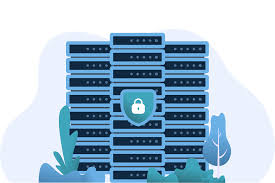-
- Container Security Best Practices in a VPS Environment
- Understanding the Importance of Container Security
- Configuration Steps for Secure Container Deployment
- Step 1: Choose a Secure Base Image
- Step 2: Regularly Update Images
- Step 3: Implement User Permissions
- Step 4: Use Network Segmentation
- Step 5: Enable Container Security Features
- Practical Examples of Container Security
- Example 1: Securing a Web Application
- Example 2: Database Container Security
- Best Practices for Container Security
- Case Studies and Statistics
- Conclusion
Container Security Best Practices in a VPS Environment
In today’s digital landscape, the adoption of containerization has revolutionized the way applications are developed, deployed, and managed. However, with the rise of container technology comes the critical need for robust security measures, especially in a Virtual Private Server (VPS) environment. This guide aims to provide actionable insights into container security best practices, ensuring that your applications remain secure and resilient against potential threats.
Understanding the Importance of Container Security
Containers encapsulate applications and their dependencies, allowing for consistent deployment across various environments. However, their lightweight nature can lead to vulnerabilities if not properly managed. In a VPS environment, where multiple users may share resources, the risk of security breaches increases significantly. Implementing effective container security practices is essential to protect sensitive data, maintain compliance, and ensure the integrity of your applications.
Configuration Steps for Secure Container Deployment
Step 1: Choose a Secure Base Image
Start by selecting a minimal and secure base image for your containers. Avoid using images with known vulnerabilities. Use trusted sources such as official repositories or well-maintained community images.
docker pull ubuntu:20.04Step 2: Regularly Update Images
Keep your container images up to date to mitigate vulnerabilities. Regularly check for updates and rebuild your images accordingly.
docker pull ubuntu:latestStep 3: Implement User Permissions
Run containers with the least privilege principle. Avoid running containers as the root user to minimize the impact of a potential breach.
docker run --user 1001 my-containerStep 4: Use Network Segmentation
Isolate containers using network segmentation to limit communication between them. This can be achieved using Docker networks.
docker network create my-network
docker run --network my-network my-containerStep 5: Enable Container Security Features
Utilize built-in security features such as AppArmor or SELinux to enforce security policies on your containers.
docker run --security-opt apparmor=my-profile my-containerPractical Examples of Container Security
Example 1: Securing a Web Application
Consider a web application running in a container. To secure it:
- Use a minimal base image like Alpine Linux.
- Run the application as a non-root user.
- Implement HTTPS to encrypt data in transit.
Example 2: Database Container Security
For a database container, follow these practices:
- Limit network access to the database container.
- Use environment variables for sensitive configurations.
- Regularly back up data and test recovery procedures.
Best Practices for Container Security
- Conduct regular vulnerability scans on your images.
- Implement logging and monitoring to detect suspicious activities.
- Use container orchestration tools like Kubernetes with built-in security features.
- Educate your team on security best practices and potential threats.
Case Studies and Statistics
According to a report by the Cloud Native Computing Foundation, 50% of organizations experienced a security incident related to containers in the past year. A case study from a leading financial institution revealed that implementing strict access controls and regular vulnerability assessments reduced their security incidents by 70%.
Conclusion
container security in a VPS environment is not just a technical requirement; it is a fundamental aspect of maintaining the integrity and confidentiality of your applications. By following the configuration steps outlined in this guide, adhering to best practices, and learning from real-world examples, you can significantly enhance your container security posture. Remember, security is an ongoing process that requires vigilance and adaptation to emerging threats. Stay informed, stay secure.
